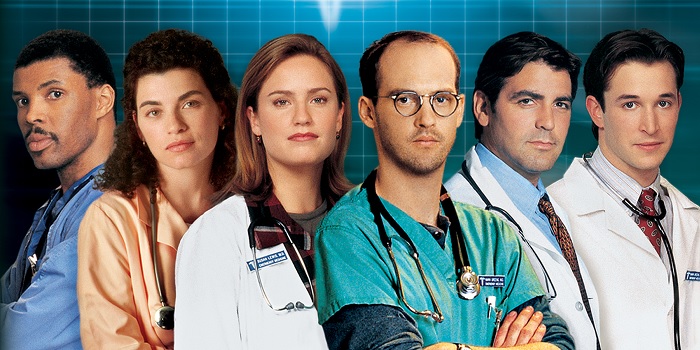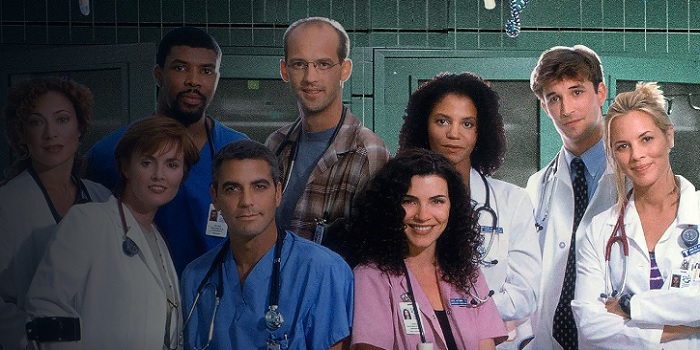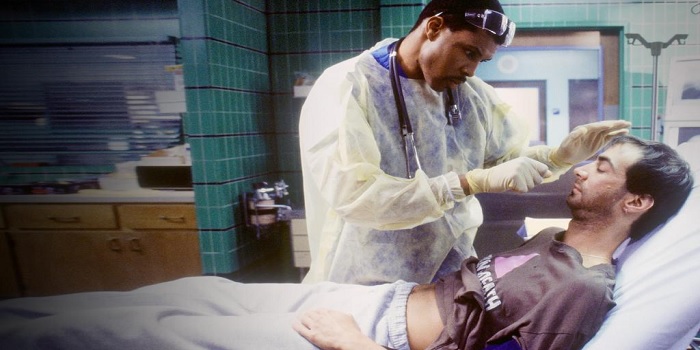Before NBC’s ER TV series, most medical dramas were known for their inaccuracies, from blunderous medical jargon and the misrepresentation of symptoms to unnecessary fear-mongering, exaggerated miraculous recoveries, and all shades of unrealistic take on medical issues. Regardless, they managed to draw a decent following, thanks to their relatability—plotlines woven around circumstances viewers can relate to. This factor and the medical accuracy of ER are the core attributes behind its reign as a top show throughout its 15-year run.
Introduced to a new generation of viewers on Hulu in 2018, the ER TV series recaptured the approving ratings of its original release, justifying its clout as one of the shows that set a high standard for subsequent medical dramas like Grey’s Anatomy, Nurse Jackie, and The Good Doctor. In addition to being one of the first hospital dramas that realistically portrayed the medical world, the show presented meaningful, everyday dramas that resonated with viewers as much as it fairly represented medical practitioners.
Brains Behind The Creation Of ER TV Series

The ER TV series came out of a 150-page screenplay written in 1974 by late American writer and filmmaker John Michael Crichton. His experience as a medical resident in a busy ER inspired the script, originally meant to be incorporated into Steven Spielberg’s Jurassic Park, a 1993 blockbuster hit based on Crichton’s 1990 novel of the same title. While Crichton and Spielberg worked on Jurassic Park, the ER screenplay was pitched to NBC and greenlit as a two-hour movie. The parties involved later opted for a series, with John Wells and Christopher Chulack as executive producers.
ER eventually premiered on September 19, 1994, and ran until April 2, 2009, for 15 seasons with a total of 331 episodes. Upon its release, there were concerns about how the ER TV series would fare against CBS’ Chicago Hope, another medical drama series that premiered a day before ER. While the series created by David E. Kelley was a good show, ER blew it into the shade. The NBC show’s massive following and good ratings saw it become the longest-running primetime medical drama in the history of American television. However, Shonda Rhimes’ Grey’s Anatomy has relegated it to second place.
How ER’s Cast And Plot Made It A Unique Show

The cast of the ER TV series contributed to its long-term success, just as its plot quality nurtured and sustained viewers’ interest throughout its 15-year run. Featuring a large ensemble cast that changed over time, the medical drama delivered a dynamic set of characters with purposes and flaws that propelled the plot, creating a meaningful and relatable drama that mirrors the casualty department of hospitals. Set in Chicago, ER’s storyline revolves around medical practitioners. It juxtaposes their profession against their personal lives while they strive to save lives at County General Hospital’s emergency room.
Commenting on how the cast and plot carried the show, Wells told TheHollywoodReporter that they “were careful never to sugarcoat the material or cast doctors as larger than life. They made mistakes, and patients acted like idiots- just like in real life,” he added. Chulack echoed Wells’ sentiment, asserting that they prioritized creating a show that reflects an emergency room in real life. “The whole idea was to convey the pace of working in an actual ER. That, and studying the lives of the people who work in that emergency room and how this job impacted them,” he told the publication.
Overview Of ER’s Ensemble Cast

The original starring cast of the ER TV series included Anthony Edwards‘ Mark Greene, George Clooney’s Doug Ross, Sherry Stringfield’s Susan Lewis, Noah Wyle, Julianna Margulies, and Eriq La Salle. Between season 2 and season 4, Canadian-American actress Gloria Reuben joined the show as a regular alongside Laura Innes, Maria Bello, Alex Kingston, and Kellie Martin. Season 5 saw Paul McCrane’s Robert Romano and Ming-Na Wen’s Jing-Mei “Deb” Chen become regular casts. It was also the season Goran Visnjic, Michael Michele, Erik Palladino, and Maura Tierney joined the main cast.
With the departure of several of the original cast, Maura Tierney, Sharif Atkins, Mekhi Phifer, and Parminder Nagra all joined the show as regulars towards its end. This was also true for Linda Cardellini, Shane West, Scott Grimes, John Stamos, Angela Bassett, and David Lyons. In all, ER’s robust cast allowed detailed character development, thereby capturing the complexities of healthcare while delivering a riveting, realistic drama that indulged viewers’ health curiosity.
Legacy And Cultural Impact Of ER TV Series

Setting the trend for medical dramas to take medicine seriously is perhaps ER’s greatest legacy. Counted among the top medically realistic drama series of all time, ER pulled viewers from over 30 million households at its peak. It received 124 Emmy Awards nominations, out of which it won 24 among other coveted gongs like the Golden Globe, Screen Actors Guild, People’s Choice, GLAAD Media, and Image Awards. The show’s popularity and massive reach positively impacted public views on healthcare in the United States and, indeed, across the globe. It had a tremendous influence on the health sector, showing that beyond entertainment, such dramas could be a medium for raising awareness on health-related issues.
The ER TV series helped viewers embrace healthy living, take their well-being seriously, and make responsible healthcare choices. Joe Sachs, a technical adviser, writer, and producer on the show, expressed that the series made such a difference because showrunners were committed to keeping it real. “We’d bend the rules but never break them,” he said, adding that “…being accurate was important for more reasons than just making real and responsible drama.” Sachs was referring to viewers who saw something on ER that saved their lives. He told TheHollywoodReporter about a woman from Texas who discovered she had a brain tumor after watching Anthony Edwards‘ Dr. Mark Greene succumb to the illness on the series.
 Follow Us
Follow Us





